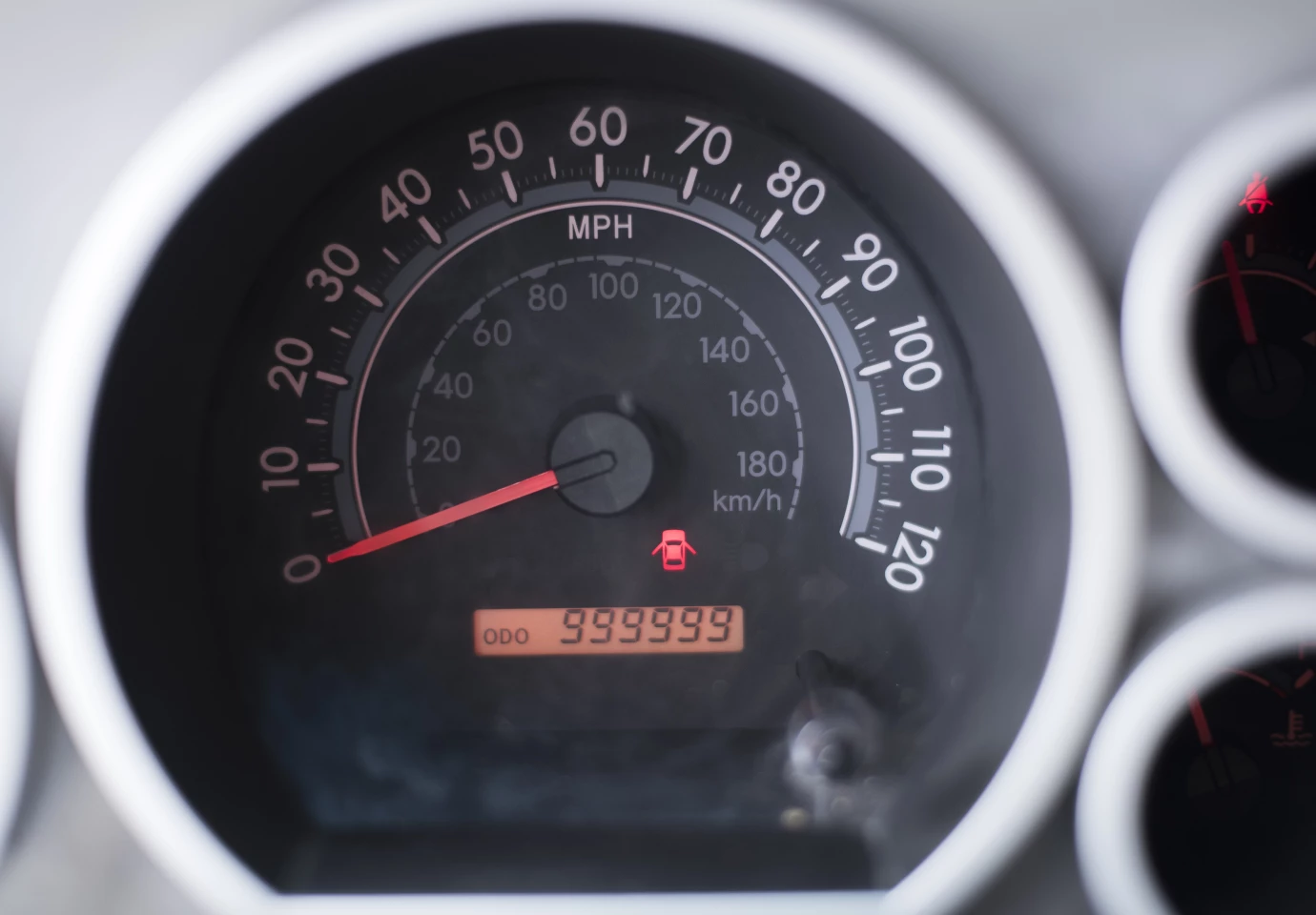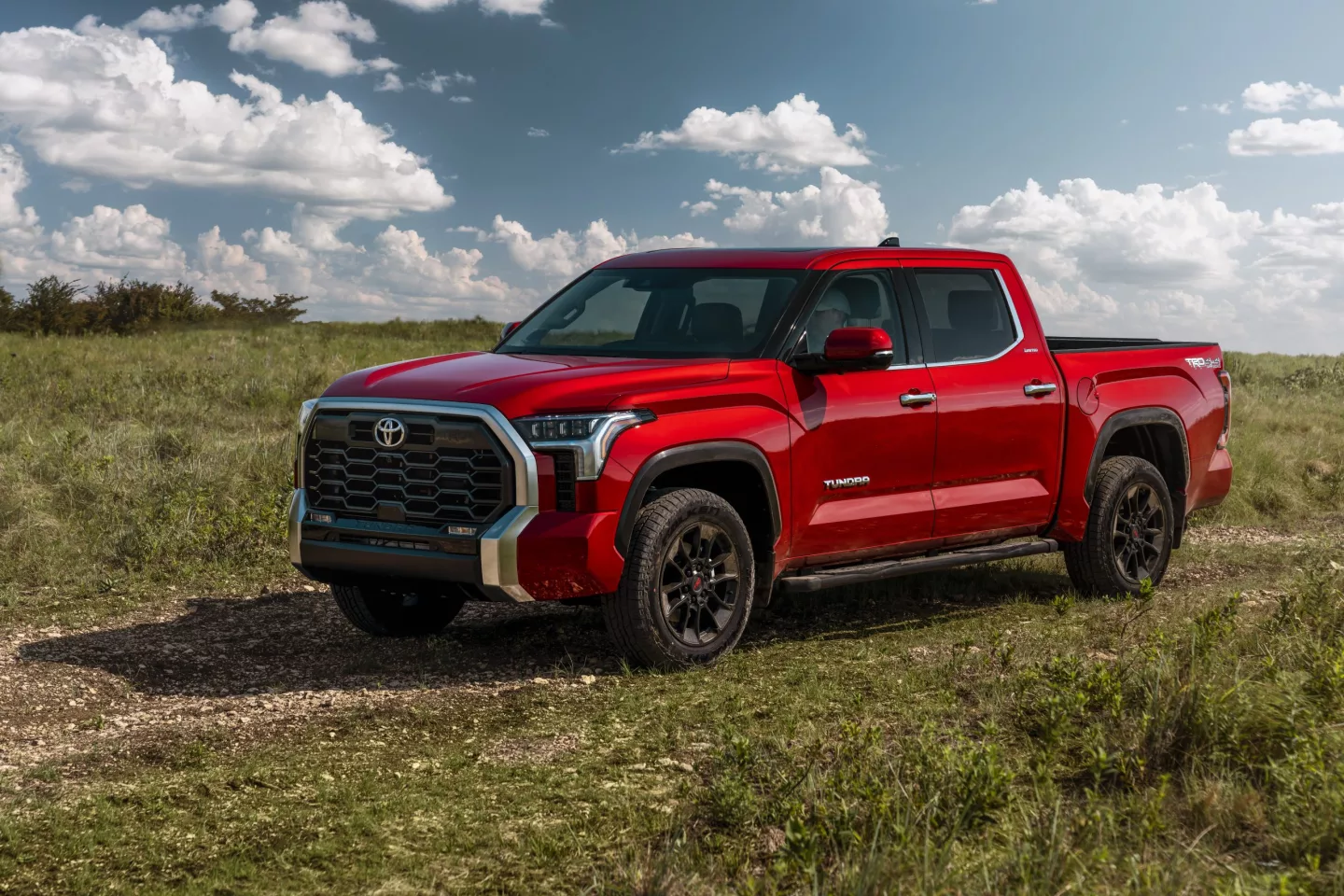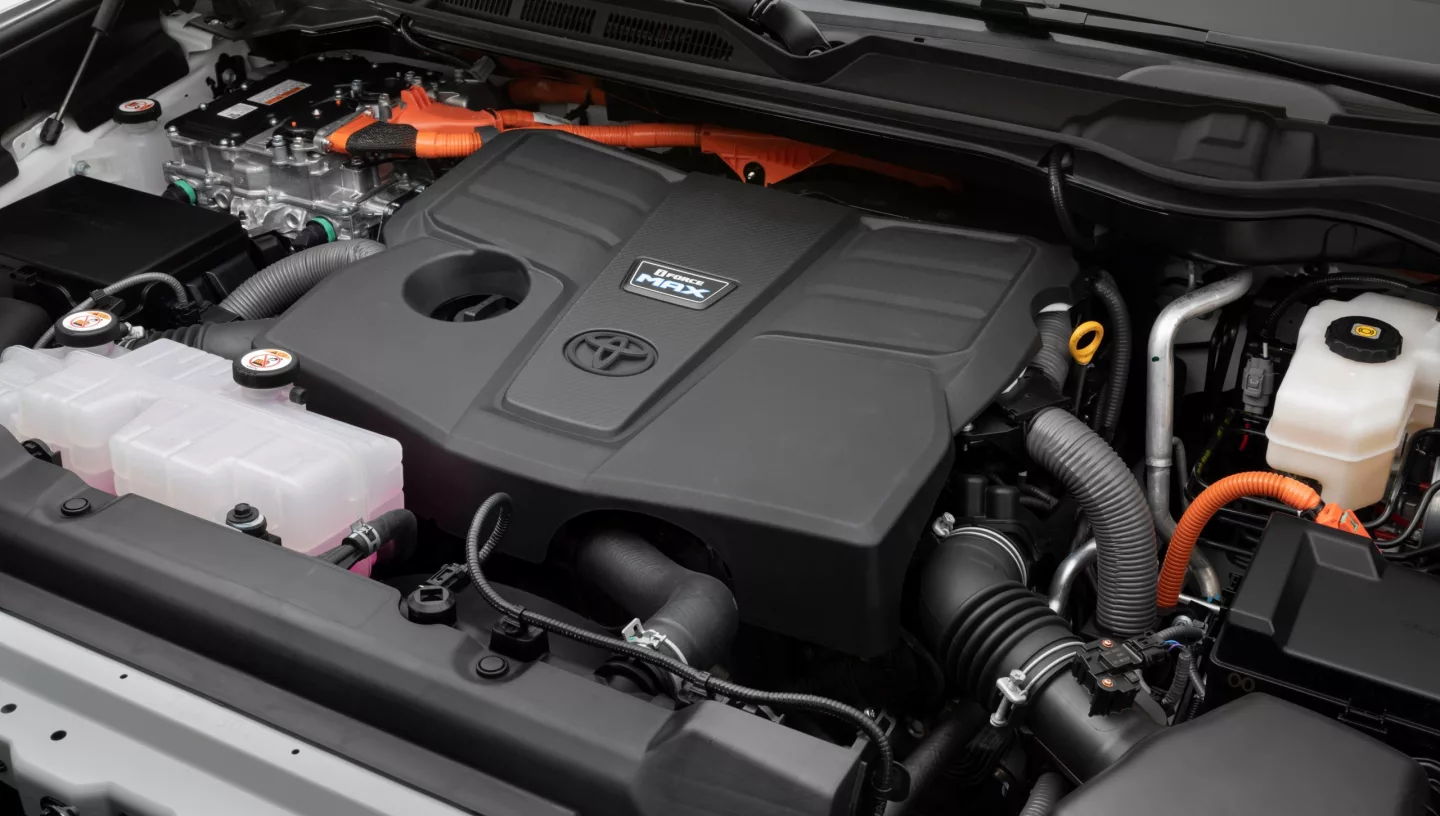Toyota has been dragging its feet when it comes to committing to pure-electric vehicles, but it's long been a hybrid leader. So while the full-size pickup truck competition is starting to go electric, Toyota is biding its time with a stop at hybrid power. It's not a half-hearted effort, though, as the twin-turbo V6 hybrid powertrain on the all-new 2022 Tundra is the powerful range-topper. The third-generation Tundra also adds a raft of other tech upgrades, including a robust standard driver-assistance package, a new 14-in infotainment system and an upgraded suspension with adaptive damping.
Usually a line like "born from invincibility" is pure marketing b.s., but in the case of the Toyota Tundra, it does come with some backing evidence. Beyond sharing its lineage with some of the most relied-upon, go-everywhere vehicles of all time, most notably the Land Cruiser, the Tundra itself has been known to make it all the way to the million-mile mark. It's not quite immortally "invincible," but it's absolutely engineered to keep pushing onward, no matter what type of ground surface stretches out in front of the tires.

That grille, though. We've long admired the strong, geometric grille lines on the Tundra and Tacoma – rugged and prominent without becoming oversized or ungainly. That admiration ends today with the introduction of way too much grille on this new-generation Tundra. Toyota continues its love affair with the front grille (can't forget this air-vacuuming monster) by stretching the new Tundra's mouth out to below the headlamps, highlighting it in certain variants with a thick, heavy metal surround, and deleting the bottom of that surround so that the black mesh bleeds into the black bumper. It's the same kind of jowly front-end treatment Toyota gave the 4Runner, and it's a big step down from the current-generation Tundra face, in our opinion.
The remainder of the new Tundra design is a more modest evolution from the Gen-2, gaining more definition and strength at the wheel arches, hood and lower sides. The glasshouse shows a modern, wraparound look courtesy of black-out A-pillars and hockey-stick metal trim on some models.

The new Tundra won't win any beauty contests, but that's not really what it's about . The third-generation truck gets plenty of upgrades to improve its role as a rugged, powerful work/adventure multitool. Toyota leaves the big, inefficient V8 behind in favor of a new twin-turbo 3.5-liter V6 and 10-speed automatic transmission that team for up to 389 hp and 479 lb-ft (649 Nm) of torque, up from the 5.7-liter V8's 381 hp and 401 lb-ft (544 Nm). Without offering mpg estimates, Toyota says that the new twin-turbo V6 is highly efficient, so we expect some marked improvements on the current Tundra's dismal 13-mpg city/17-mpg highway EPA figures.
Those looking to further improve efficiency can pair the V6 and 10-speed with an i-Force Max electric motor-generator system that comes in a bell housing between the V6 and transmission. The hybrid system pushes max output up to 437 hp at 5,200 rpm and 583 lb-ft (790 Nm) at 2,400 rpm, offering low-speed EV driving for city use, boosted torque low in the rpm range for off-roading, and responsive linear power delivery during highway driving. Battery power comes stored in a nickel-metal-hydride pack tucked below the rear seats.

The Tundra comes built atop a new high-strength boxed steel ladder frame and does its hauling in an aluminum-reinforced composite bed. Below that bed, Toyota pulls out the aged leaf springs, swapping in a coil-sprung multi-link suspension system. Toyota credits the new suspension with helping to increase max towing by over 17 percent to an even 12,000 lb (5,440 kg) and payload to 1,940 lb (880 kg). Both the rear and the front double-wishbone suspensions come standard with twin-tube shocks, and TRD versions feature shocks from Bilstein and Fox. A newly available rear air suspension system features three height seatings and leveling functionality, and a new adaptive damping system available for the first time on the Tundra adjusts damping to current road or ground conditions.
Boosting safety, the Toyota Safety Sense 2.5 driver-assistance suite comes standard across the entire Tundra line. Highlights of the package include Dynamic Radar Cruise Control, Lane Tracing Assist with corrective steering, and Pre-Collision System with pedestrian detection.
Inside, the Tundra debuts Toyota's new Audio Multimedia system with an improved HMI (human-machine interface) that encompasses sight, touch and voice control. The system comes with an 8-in or available 14-in touch display and includes a physical knob for good old fashioned grab-and-twist volume control. The 14-in touchscreen works seamlessly to show feeds from the available rear, side and front-view cameras, assisting in identifying off-road obstacles and keeping an eye on an in-tow trailer.

The new Tundra will come in a number of sizes and trims, including a newly available CrewMax cab with 6.5-foot bed configuration that allows buyers to enjoy the most spacious interior and a large bed. The new TRD Pro will only be offered with the i-Max Force hybrid powertrain, which will be available as an option on Limited, Platinum and 1794 trims.
Toyota will begin assembly of the 2022 Tundra at its San Antonio manufacturing plant later this year. It will release pricing closer to launch.
Source: Toyota


















